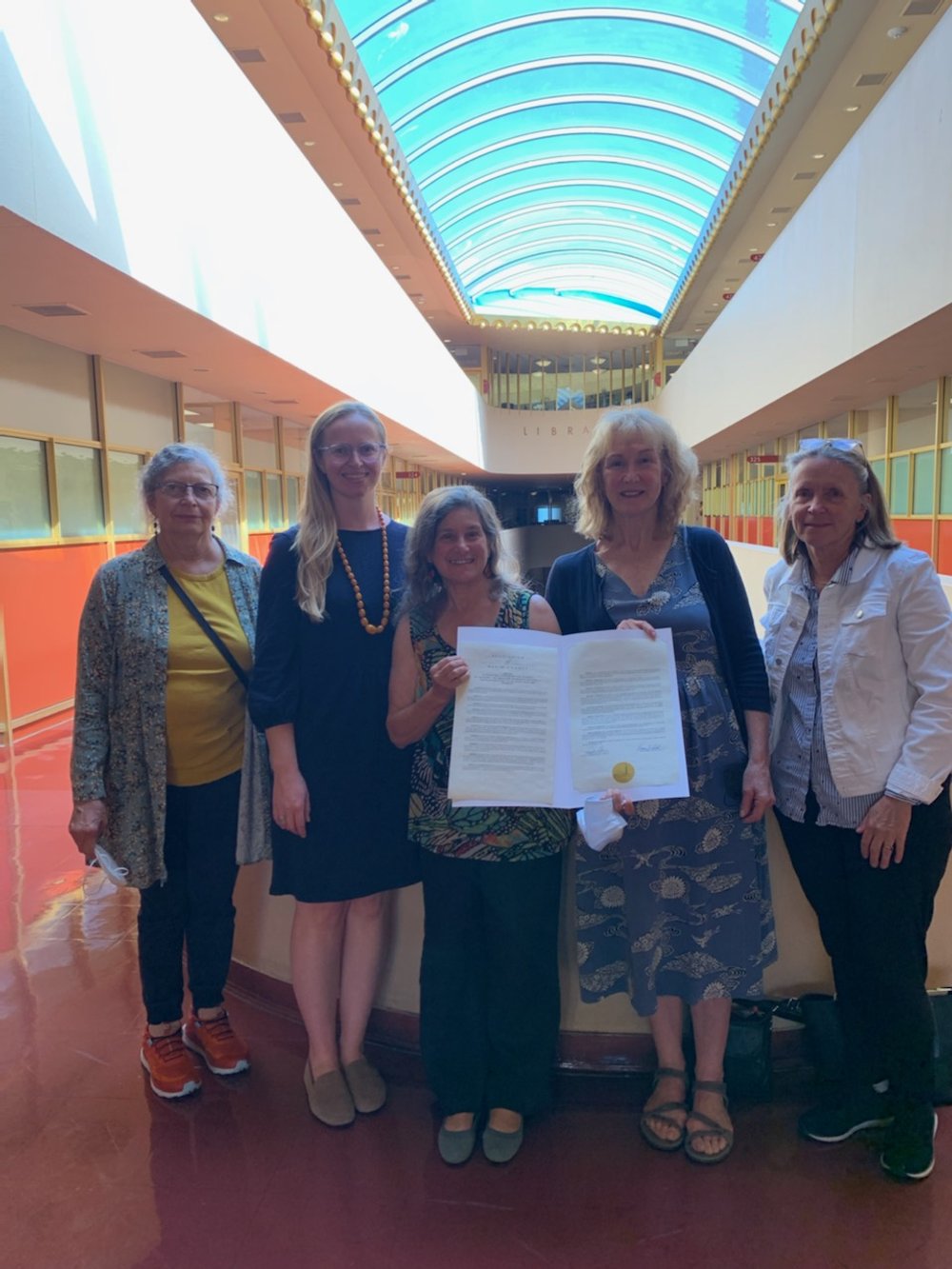In honor of California Biodiversity Day, the County of Marin’s Board of Supervisors recognized the need for our communities to support the western monarch butterfly population with conservation efforts.
The Resolution was introduced by District 4 Supervisor, Dennis Rodoni, whose district supports historic overwintering grounds for the butterfly in the coastal villages of Bolinas and Stinson Beach. The fall and winter monarch coastal overwintering phenomenon has been in steep decline since the 1980s as the populations are under stressors from habitat loss, pesticide use, invasive plants, and more.
The arrival of the western monarch butterfly to the coast signals the beginning of autumn, and symbolizes change, transformation, rebirth, hope, and abundance. The butterfly is of particular significance for the people of Indigenous Mexican and Central American origins.
With continued stark declines in the butterfly population —declining more than 97% since the 1980s—the butterfly is on track for probable extinction risk unless something is done.
Earlier in September, the County of Marin’s Agricultural Department banned the sale of tropical milkweed at nurseries operating in the County. Tropical milkweed interferes with monarch migration and reproduction—as it does not die back in the fall months when the monarchs need to migrate to the coast to survive the winter. Caterpillars in the winter months are less likely to survive the winter months. Tropical milkweed may also host a parasite (Ophryocystis elektroscirrha or OE) that reduces body mass, lifespan, mating success, and ability to fly. Learn more about Tropical Milkweed issues from the Xerces Society here.
Left to Right: Annette Anzalone; Ashley Eagle-Gibbs, Environmental Action Committee of West Marin; Mia Monroe, Xerces Society Thanksgiving County Volunteer; Marty Blum, Susan Holloway, Environmental Forum of Marin
The County Resolution supports:
Regional and coordinated response of agencies, nonprofits, communities, and individuals to work together to support the butterfly by protecting breeding and migratory habitats;
Collaborative partnerships with resource conservation districts to restore native habitat areas for pollinators near riparian areas and planting of native nectar and milkweed plants (narrowleaf and showy milkweeds);
Community partnerships of the Marin Monarch Working Group (EAC, Marin Audubon, SPAWN, Goldridge RCD, Marin RCD, Pollinator Posse, Environmental Forum of Marin, and Marin Master Gardeners) to engage and provide education and resources for communities to support monarchs;
Protection and management of overwintering habitats in coastal areas to ensure rich and dynamic habitat tree covers, fresh water, and native nectar plants are available; and
Protection of habitat from inappropriate application of persistent pesticides that harm all pollinators including monarch butterflies.
The resolution was supported by all Supervisors and several speakers attended the meeting to support the Resolution and provide updates on collaborative projects taking place throughout the County to support the monarch butterfly.
A special Thank You to Lauren Richards, Summer Legal and Policy intern, who completed the first draft of the Resolution.
What’s Next?
Monarchs on the move!
You can spot migrating monarchs as they are making their way towards the coast from inland breeding habitat areas. Monarchs are already being spotted in Stinson Beach and Bolinas. EAC team members spotted a monarch in Fairfax flitting around at O’Donnell’s Native Nursery enjoying the native narrowleaf milkweed and selection of flowering native nectar plants.
FALL IS FOR PLANTING
It’s a great time to visit your local native plants nursery to pick up nectar plants to provide food for the butterflies in the winter months.
If you live along the coast or within 5 miles of an overwintering location, do not plant milkweed. Instead, plant native nectar plants and set up fresh water sources so you can be a support garden providing food and water for monarchs that need to survive the winter months. Critical timeline: October through February.
If you live inland, its the perfect time to prepare your garden for the winter and spring. Purchase native narrowleaf of showy milkweed for your spring garden. Native milkweeds die back in the autumn (coordinated with the monarch migration cycle) so do not fret if your plant looks like it died. It is going dormant and will return in the spring if the roots are in good shape. You can also purchase nectar plants that will be blooming in February when the monarchs depart overwintering sites and make their journey inland for spring and summer breeding.
HOW TO GET INVOLVED
The Marin Monarch Working Group in partnership with EAC will be creating a website and is seeking to expand partnerships. If you are interested in joining the Working Group, meetings take place virtually the 2nd Friday of each month at 3 PM.
Contact marinmonarchwg@gmail.com for information to join meetings or sign up for the email list.




